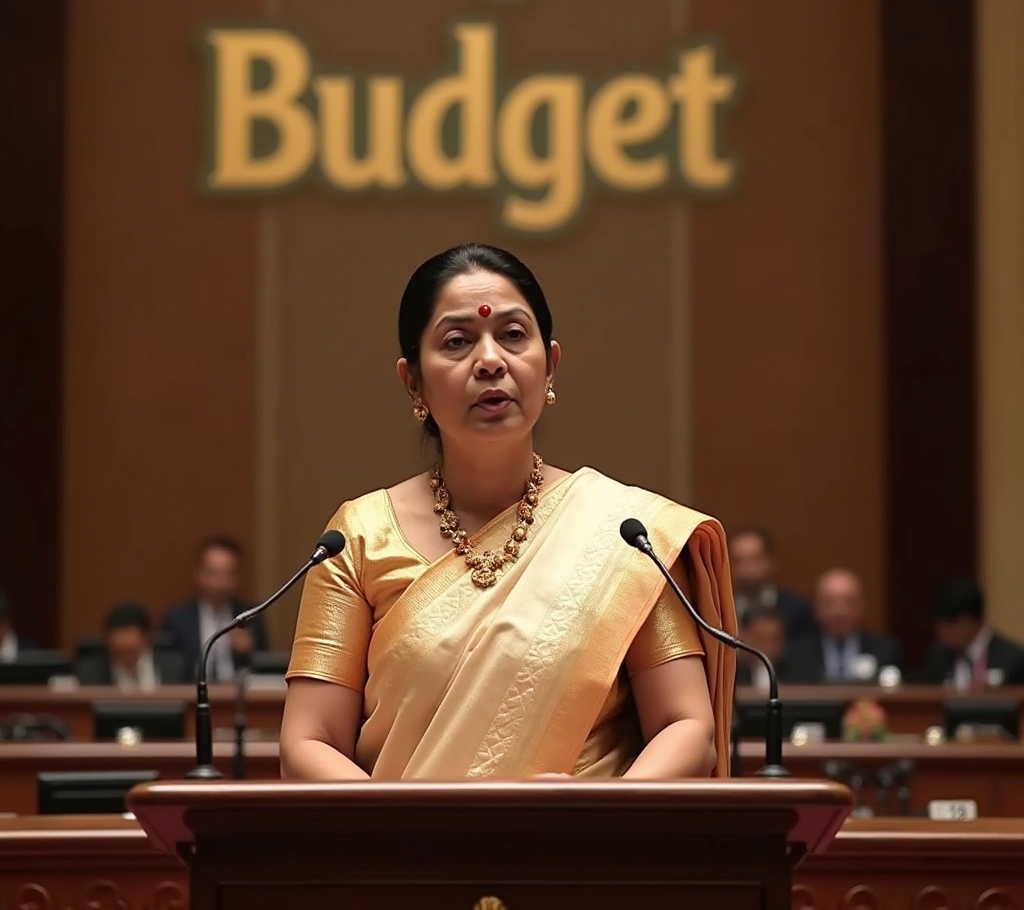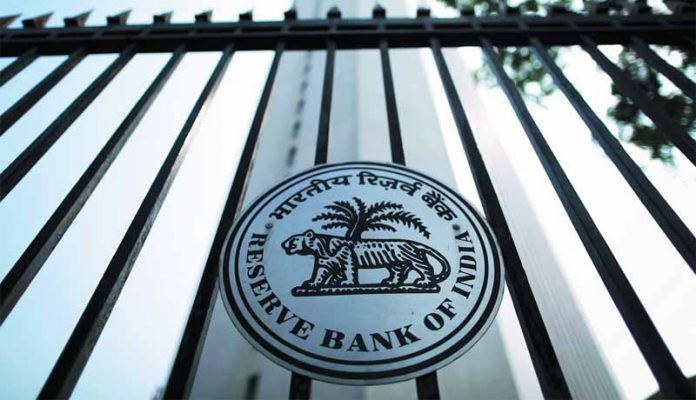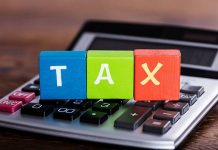This article has been written by Sakshi Raje. This article presents a brief about Section 44ADA of the Income Tax Act, 1961, which allows small, professional taxpayers to simplify their tax filing process. In this article, we aim to cover all the key aspects of Section 44ADA, including an overview of the section, its impact on the broader public, eligibility criteria, and computation methodology. Additionally, with detailed examples and explanations, this article provides various perspectives and insights on how the section can be read and interpreted.
Table of Contents
Introduction
The Income Tax Act, 1961 of India, is a basic legislation that governs the taxation part of the income earned by individuals and entities. It basically highlights the rules and regulations for the collection, deduction and recovery of income tax in India.
In this article, we will delve into one such provision of income tax, which provides provision for the taxpayers to indulge in small professional business practices. In the budget session of the financial year 2016-17, Section 44ADA of the Income Tax Act, 1961, was introduced to offer small professional business owners a streamlined business environment by eliminating the need for maintaining detailed books of accounts and undergoing audits.
The basic idea of Section 44ADA is that it removes the requirement for meticulous bookkeeping by enabling qualified professionals to determine their taxable income using an assumed income rate. By including this clause, the burden of maintaining financial records is lessened, and the process of filing taxes is made simpler and more efficient.
Here, we will examine the key aspects of Section 44ADA, such as its applicability, qualifying requirements, and benefits. Along with discussing any potential problems or things experts should be aware of, we will also look at real-world instances to show how this area can be used effectively. Regardless of your level of experience, it has been designed to help you maximise the benefits of Section 44ADA, whether you’re a novice attempting to learn the ropes or an experienced expert looking to maximise your tax filings.
Meaning of presumptive tax
The small business enterprises have always been one of the strong and important parts of the Indian economy and have also been a great contributor towards the country’s GDP. This scheme has been the most difficult to understand yet the most interesting part of India’s tax system. This scheme was framed to benefit the small business enterprises, that is, the taxpayers, by providing them the relief of maintaining books of accounts as mentioned under Section 44AA and getting the same audit completed under Section 44AB. As per Section 44AD, this scheme is applicable to small business individuals like any individual resident; resident partnership firms, however, excluding Limited Liability Partnership (LLP) firms; and resident Hindu Undivided Families (HUF).
What is Section 44ADA of Income Tax Act, 1961
Section 44ADA of income tax was introduced in the 2016 Financial Budget and was effective from 2017–18. It was introduced in order to simplify the tax regime for professionals.
Before the introduction of Section 44ADA, it was mandated for professionals to maintain detailed books of accounts and get the same audited in case the gross receipt exceeded certain limits, which was costly and cumbersome, especially for small businesses. Therefore, in order to simplify the tax-related complexity and lessen the cost and burden of maintaining books for small professionals, the government came up with Section 44ADA.
Section 44ADA is therefore referred to as a simplified method of taxation for professionals. Under the provision of this Section, the term presumptive taxation scheme is used, which refers to the taxable income that is presumed to be a certain percentage of the gross receipts, irrespective of the actual expenses incurred.
Clause-wise explanation of the provision
Clause-1
Clause 1 of the provision provides an explanation of the eligibility criteria for the provision, as per which:
- This section applies specifically to individuals or partnership firms, except for LLPs (Limited Liability Partnerships), operating within the territories of India. It targets those engaged in professions as outlined under Section 44AA, clause 1, which includes lawyers, engineers, freelancers, doctors, architects, and various other professions.
- Secondly, it is necessary that the total gross receipts from the business (profession) should not exceed 75 lakhs (as per the latest update of the Budget of 2023, effective from Assessment Year 2024-25) in one financial year.
- Lastly, the taxable income should be deemed to be equal to 50% of the gross receipt from the profession, however, in cases where the gross receipts from the actual income are higher than 50% of the gross receipt, then the same can be considered to be the profits and gains of such a profession chargeable to tax under the heading “Profits and gains of business or profession.”

Clause-2
Under the 2nd clause of the provision, deductions mentioned under Sections 30 to 38, which mention deductions related to business expenses, are considered to have been given full effect, and no further deductions can be claimed under the provision.
Clause-3
The third clause of the provision mentions that the written-down value of assets used for the profession is deemed to have been calculated as if depreciation had been claimed and allowed for all previous years.
Clause-4
The last part of the provision states that the qualified professionals who are eligible under the provision can declare 50% of their gross earnings as taxable income, which removes the requirement for extensive accounting records and streamlines the tax compliance procedure. Professionals in specific fields with their gross receipts of more than Rs. 75 lakhs in a fiscal year are eligible under the provision. However, the professional shall have to maintain their books of accounts if the total income exceeds the basic exemption limit or if their stated income is less than 50% of their gross receipts.
Latest update
As per the recent Budget of 2023, the government has introduced certain significant changes to Section 44ADA, which provides the presumptive taxation schemes for small professionals. Below are mentioned certain important changes:
| Category | Recent Update |
| Threshold | The turnover limit has been increased from 50 lakhs to 75 lakhs. |
| Cash Receipt | A new condition has been added as per which cash receipt should not exceed 5% of the revenue. |
Assessees under Section 44ADA
As per the Income Tax Act, Section 44ADA is applicable only to certain professionals in order to benefit them with a simplified taxation scheme. The following is the list of assessees:
- Individual
Under the scheme, only those individuals who are residents of India and are engaged in professional business eligible under this provision can be considered as assessees under this provision of income tax.
- Partnership Firms
Partnership firms, excluding Limited Liability Partnerships, that are Indian residents and are engaged in eligible business practice can also be considered as assessees under the scheme.
To be noted
- Limited Liability Partnerships (LLP) are specifically exempt from the ambit of this scheme.
- The total income of the assessee from the eligible professional business practice should not exceed the prescribed limit, which is currently Rs. 75 lakhs to be considered qualified under this scheme.
Eligible businesses/professions under Section 44ADA
The eligibility criteria under Section 44ADA are mentioned under Section 44AA(1), and accordingly, the eligible business professionals that are eligible under the same are as follows:
- Legal Professional: lawyers, legal consultants, solicitors, practising advocates
- Medical professionals: doctors, surgeons, medical practitioners, etc.
- Technical professionals: engineers, technical advisory consultants
- Chartered accountants
- Company secretary
- Interior designers and decorators
- Artists, movie directors, actors, music artists, choreographers, singers, etc.
Importance of Section 44ADA of Income Tax Act
The provision in Section 44ADA of the Income Tax Act, 1961, provides a simplified taxation regime for professionals. This provision provides presumptive taxation schemes under which one does not need to calculate actual profit from business, instead, professionals can calculate or announce a certain percentage of their total turnover as a taxable income. Below are the pointers mentioning certain benefits of the same:
- The introduction of Section 44ADA has easen up the opportunity for professionals by allowing them to run their businesses smoothly.
- The provision allows the professionals to reduce their burden from the maintenance of records and detailed books of accounts, which in terms can be very lengthy, costly and also time-consuming. It further motivates the strict adherence to compliance by making the tax system easily accessible to sole proprietors.
- The specific professionals who fall under the eligibility criteria and also who have opted for this scheme are exempted from the income tax audits, except for the condition where it is required.
- This scheme leads to a lower tax burden for the professionals, as under this scheme applicable tax rates are lower in comparison to other income tax rates.
- As the name suggests, this scheme provides predictable taxable liability, which ultimately makes it easier for professionals to plan their expenses accordingly.
In summary, the provision is very valuable for professionals as it reduces their tax liability, provides a predictable tax regime, and also has simplified their compliance tax burden.

Computation of presumptive income under Section 44ADA
Section 44ADA provides its beneficiaries with the simplified tax regime. Under this scheme, the taxpayer’s income can be computed as the fixed percentage of their gross receipt, where detailed accounting records are not mandatorily required to be maintained, and once the eligibility criteria are met, the same can be calculated as follows:
Steps to calculate presumed income:
- Determination of gross receipt/turnover:
For the calculation of presumptive tax income, first we need to calculate the total gross receipt or turnover from the professional business for the particular financial year, which shall include all the income or revenue received from earnings from the professional business or the service provided.
- Presumptive rate application:
As per Section 44ADA, the income is presumed to be 50% of the total gross receipts or turnover.
Further, it is to be noted that this 50% is considered the taxable income under the provision, and no further deductions like that on expenses such as rent, salaries, etc. are allowed.
The formula for the same is as follows:
Presumptive Income = Gross Receipts/Turnover×50%
- Final:
At the last step, the amount received from the above calculation is considered as presumptive income, which is subject to tax under the Income Tax Act, 1961.
Illustration 1:
If an advocate has a gross receipt of Rs. 40 lakhs for the financial year 2023-24, then the computation of his total taxable income would be:
| Gross Receipt/ Turnover | 40,00,000 |
| Presumptive Income | 50% of 40,00,000 |
| Calculation | 40,00,000×50%= Rs. 20,00,000 |
Therefore, the total taxable income of the advocate would be Rs. 20 lakhs. That is, Rs. 20 lakhs is considered the taxable income, and the advocate has to pay tax on this amount according to the applicable income tax slab rates.
Illustration 2:
Mr. Ajay is a freelance content creator. His total receipts for the financial year 2022–23 were Rs. 30 lakhs. Additionally, his total annual official expenses were estimated at around Rs. 10 lakhs towards rent, conveyance, electricity, travel, etc.
Through this example, we will compare Ajay’s taxable income under normal provisions and the presumptive scheme as mentioned below:
| Particulars | Normal Income Tax Calculation | Presumptive Tax Calculation |
| Gross Receipt/ Turnover | 30,00,000 | 30,00,000 |
| Expenses Incurred | 10,00,000 | – |
| Presumptive Income | – | 50% of 30,00,000(I.e. (30,00,000×50%) |
| Taxable Income | Rs. 20,00,000.(30,00,000-10,00,000) | Rs. 15,00,000(30,00,000×50%= Rs. 15,00,000) |
Illustration 3:
Akshay is a practising advocate, whose total gross receipts are Rs. 60,00,000, and cash receipts out of the same are Rs. 2,50,000. He has further incurred yearly expenses in order to earn the professional income of Rs. 9,00,000.
How to compute the net income chargeable to tax under the presumptive taxation scheme.
| Gross Receipt/ Turnover | Rs. 60,00,000 |
| Cash Receipt | 2,50,000 (which is 5% of the total gross receipt, ideally what is mentioned under the provision, hence, Akshay can choose to claim a benefit and pay income tax under the provision of presumptive tax). |
| Presumptive income | 50% of 60,00,000 |
| Calculation | 60,00,000×50%= Rs. 30,00,000 |
Therefore, the total taxable income of the advocate would be Rs. 30 lakhs.
Hence, based on the above examples, it can be said that Section 44ADA offers simplified ways for professionals to calculate their taxable income. However, while computing, the following pointers should be kept in mind:
- On the declaration of income under Section 44ADA, no additional deductions or expenses are allowed, which shall also include Section 80D, etc. against the presumptive income so declared under Section 44ADA.
- For opting for this provision, small business owners should note the cash receipt should not exceed 5% of the total gross receipt.
- Under this provision, there is no mandatory requirement for maintaining detailed books of accounts, however, it is always advisable to maintain a basic book of accounts mentioning income and expenditure for any future references.
- The taxpayer has the liberty to opt-out under this scheme and can restore to the normal way of income tax computation.
- The income should be declared using the ITR-4 (Sugam) form.

Interplay between Sections 80C and 44ADA of Income Tax Act
The provisions of Section 80C and Section 44ADA go hand in hand and can be a bit complex to understand. Below is a brief introduction to the same and how they work together:
Definition
Section 80C: This provision of the Income Tax Act mentions the deductions on various investments and expenditures, like those made towards the Provident Fund (PF), National Savings Certificates (NSC), life insurance premiums, home loans, the Equity Linked Savings Scheme (ELSS), and many more. The maximum deduction allowed under 80C is up to Rs. 1.5 lakhs in a particular financial year.
Section 44ADA: This provision allows eligible professionals to declare 50% of their gross receipt of income as their income, however, under this provision, no further deductions are allowed once the same has been declared.
Therefore, while declaring the income under the provision of Section 44ADA, if the taxpayer wishes to use the benefit of a tax-saving investment provision, that is, Section 80C, he/she is eligible to claim the deductions under 80C even if he/she has opted for a presumptive taxation scheme under Section 44ADA.
Steps for the Calculation
- Presumptive Income calculation: Firstly, for the calculation of the provision, one needs to determine their income under Section 44ADA as 50% of the gross receipts.
- Deductions: Secondly, calculate the deductions available to the taxpayer under Section 80C and other eligible sections, i.e., Sections 80d to 80g.
- Taxable Income Computation: Thirdly, subtract the deductions from the presumptive income to arrive at your taxable income.
- Tax liability calculation: Lastly, determine the tax liability based on the applicable tax slabs.
Illustration:
An engineer has a gross receipt of Rs. 40 lakhs and has made an investment that is eligible under Section 80C as 1.5 lakhs:
Presumptive income calculation under Section 44ADA:
Presumptive Income: Rs. 40,00,000×50%= Rs. 20,00,000
Deduction:
The taxable income after Section 80C deduction would be:
Taxable income: Rs. 20,00,000− Rs. 1,50,000 = Rs. 18,50,000.
Taxable Income Computation:
The engineer’s net taxable income will be Rs. 18.5 lakhs after claiming the deduction under Section 80C.
Income tax form incidental to Section 44ADA
The provision of Section 44ADA does not have any separate form to be filed, thereby, the taxpayer who wishes to opt for this scheme has to typically use the same income tax return form that other payers are using, that is, ITR-4. However, it is to be noted that the individual opting for this scheme has to be eligible, as mentioned above, for opting for ITR under Section 44ADA.
The filing procedure is identical to the standard procedure. ITR-4 forms can be prepared and submitted electronically via the Income Tax Department’s e-filing portal in one of two ways either by uploading the XML file created by tax software or by completing the form directly on the portal.
Case laws
Pramod Kumar Tiwari, Raipur vs. DCIT (CPC), Bengaluru (2022)

In the present Pramod Kumar Tiwari, Raipur vs. DCIT (CPC) Bengaluru (2022), the main issue was the incorrect use of presumptive taxation under Section 44ADA. Pramod Kumar Tiwari had filed his tax return using Section 44ADA, which offers a simplified tax scheme for certain professionals by treating 50% of gross receipts as taxable income, provided gross receipts do not exceed INR 50 lakhs.
The Income Tax Appellate Tribunal (ITAT) observed that Tiwari’s commission income, which was subject to Tax Deducted at Source (TDS) under Section 194H of the Income Tax Act, 1961, should have been reported under normal tax provisions rather than under the presumptive scheme of Section 44ADA. The ITAT noted that this income should have been disclosed using the appropriate ITR form (ITR 3) instead of under Section 44ADA’s presumptive provisions.
The CIT(A) had rejected Tiwari’s appeal, suggesting that he could have corrected the error by filing a revised return. However, the ITAT found that adjustments made by the Centralised Processing Centre (CPC) led to a double addition of income, as the gross commission was adjusted instead of the net profit. Consequently, the ITAT directed the Assessing Officer (AO) to re-evaluate the case afresh, allowing Tiwari to present all relevant facts and documentation.
Sri. Arthur Bernard Sebastine Pais vs. Deputy Commissioner of Income Tax, CPC (2019)
In the case of Sri Arthur Bernard Sebastine Pais vs. Deputy Commissioner of Income Tax (2019), decided on October 16, 2019, the ITAT addressed the applicability of Section 44ADA, which allows certain professionals to declare 50% of their gross receipts as taxable income. Arthur Pais initially reported his income under Section 44AD, meant for businesses, but later his income was assessed under Section 44ADA. Despite TDS being deducted under Section 194J for technical services, the ITAT found that Pais’s services did not qualify as technical consultancy under Section 44AA(1). Consequently, he was deemed ineligible for the presumed taxation benefits of Section 44ADA, highlighting the need for precise categorisation of services to determine eligibility for such benefits.
Section 44ADA at a glance

Here is a quick summary of Section 44ADA, a simplified method for small business owners to file their tax returns. Below is the table that outlines the key points of the article.
| Particulars | Detail description |
| Eligible professionals | Legal Professional: Lawyers, Legal Consultants, Solicitors, Practising AdvocatesMedical professionals: doctors, surgeons, medical practitioners, etc.Technical professionals: engineers, technical advisory consultantsChartered Accountants Company SecretaryInterior designers and decoratorsArtists, movie directors, actors, music artists, choreographers, singers, etc. |
| Eligibility | IndividualUnder the scheme, only those individuals who are residents of India and are engaged in professional business eligible under this provision can be considered an assessee under this provision of income tax.Partnership FirmsPartnership firms, excluding Limited Liability Partnerships, that are Indian residents and are engaged in eligible business practice can also be considered as assessees under the scheme. |
| Presumptive taxation | A presumptive taxation scheme refers to a simplified method of calculating taxable income on the basis of a predetermined percentage out of the total turnover. |
| Threshold | Earlier it was 50 lakhs, which has now been updated to 75 lakhs of the turnover. |
| Cash receipts limits | As per the latest update of the 2023 Budget, only 5% of total revenue of cash is allowed (i.e., the professional must deal in business using 95% of online transactions). |
| Audit exemption | Using this provision, professionals are exempted from income tax audits (except if required otherwise). |
| Bookkeeping requirement | The provision allows a simplified form of bookkeeping in comparison to the regular taxation method. |
| Computation formula | Determination of gross receipt/turnover:Which include all the income or revenue received from earnings from the professional business or the service provided. Presumptive rate application:As per Section 44ADA, the income is presumed to be 50% of the total gross receipts or turnover.The formula for the same is as follows:Presumptive Income = Gross Receipts/Turnover×50% Lastly, the amount received from the above calculation is considered as presumptive income, which is subject to tax under the Income Tax Act. |
Conclusion
In conclusion, it can be said that the provision of Section 44ADA of the Income Tax Act offers a streamlined tax regime specifically designed for small-scale professionals in India. By simplifying this process of tax calculation, the regime significantly reduces the administrative burden often associated with maintaining detailed accounts and undergoing rigorous audits. This untangled approach to tax compliance encourages more professionals to join the formal economy.
Additionally, the provision also allows taxpayers to claim deductions under Section 80C, ensuring they can optimise their tax savings while enjoying the benefits of simplified tax filing through ITR-4. Section 44ADA therefore can be said to be a testament to the government’s commitment to fostering a conducive business environment for small professionals. By providing a hassle-free and transparent tax system, it promotes voluntary compliance and contributes to a broader tax base.
Frequently Asked Questions (FAQs)
Can one claim deductions under Sections 80C to 80U while filing ITR under Section 44ADA?
Yes, one can claim deductions under Sections 80C to 80U, as Section 44 ADA specifies tax calculations by assuming a certain percentage of the gross receipts as taxable income, and thereby it doesn’t prevent anyone from claiming deductions under Sections 80C to 80U. These deductions are available for personal expenses like investments, medical insurance, and donations, and they can reduce your overall taxable income.
In the case of an incorrect declaration under Section 44ADA, what are the potential consequences?
Yes, there are penalties for incorrect declarations under Section 44ADA. Since in case of un-reporting of income or claiming ineligible deductions under this section, one can face penalties. These penalties can include:
- Interest on the unpaid tax: In case of unpaid tax, interest can be charged which is higher than the regular rate..
- Late filing fees: In case of filing return after the due date.
- Penalty on the amount of tax evaded: This can be a significant amount, especially for large understatements.
It is therefore important to accurately declare income and claim only eligible deductions to avoid the above mentioned penalties.
Can a professional declare income lower than 50% under Section 44ADA?
No, the professional opting to declare their income under Section 44ADA cannot declare the same in income lower than 50%.
Reference
- https://cleartax.in/s/section-44ada
- https://www.edelweisslife.in/blogs/term-insurance/decoding-section-44ada-of-income-tax-act-presumptive-tax-for-professionals
- https://www.taxbuddy.com/blog/section-44ada-what-is-the-presumptive-tax-scheme-for-professionals
- https://www.indiafilings.com/learn/presumptive-taxation-scheme/
- https://incometaxindia.gov.in/pages/acts/income-tax-act.aspx
 Serato DJ Crack 2025Serato DJ PRO Crack
Serato DJ Crack 2025Serato DJ PRO Crack










 Allow notifications
Allow notifications



